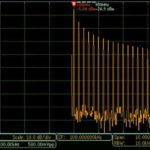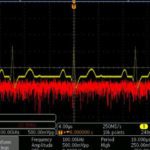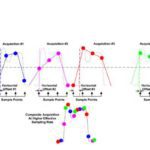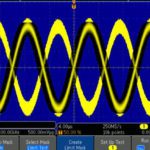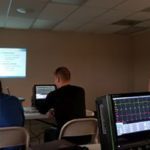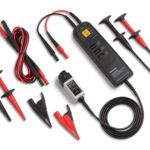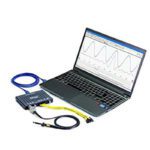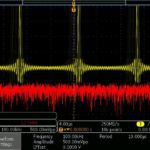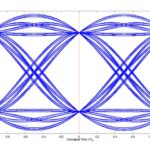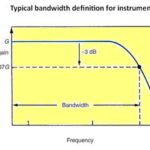Many oscilloscope users become adept at acquiring signals in the time domain and using Math>FFT in mixed domain oscilloscopes to display signals simultaneously in time and frequency domains. This is excellent for demonstrating the fundamental relationship between these different display modes, and the whole thing is user-friendly and intuitive. In a Tektronix MDO3000 oscilloscope, at […]
oscilloscope measurements
The difference between MDO and MSO displays with time domain and Fast Fourier Transforms
Mixed-domain oscilloscopes and mixed-signal oscilloscopes differ significantly in how they display waveforms. Both are useful because they permit users to simultaneously view different electrical aspects of equipment under investigation. The MDO displays a single signal simultaneously in the time and frequency domains, demonstrating how they change together. The MSO displays two different signals in the […]
Understanding oscilloscope bandwidth enhancement techniques
Data communication rates have soared in recent years and there is every reason to believe that this trend will accelerate. Information speeds that were less than 1 Gb/sec have surpassed 10 Gb/sec. Optical communication is greater than 100 Gb/sec, with 1 Tb/sec down the road. RF wireless communications is in the mid-gigahertz range, and RF […]
Mask and limit testing on oscilloscopes
Mask testing is used in production facilities for screening and quality control of components and electronic equipment and also for debugging and troubleshooting. It is quick and efficient and lets users identify harmful anomalous behavior that arises in one or a billion waveforms. It involves setting limits of acceptability on signals at the outputs of […]
Inside Teledyne LeCroy’s oscilloscope workshops
Teledyne LeCroy is conducting one-day workshops on beginner and intermediate scope practices. We sat through the events that were held in the Cleveland, Ohio area. Here’s what we saw. The Teledyne LeCroy scope workshops are held around the country, usually where LeCroy has a local office. Where we attended, things got going around 10 am […]
Basics of active and differential scope probes
By far the most used oscilloscope probes are the passive 10:1 attenuation probe. It is appropriate when the frequency of the signal under investigation is less than 600 MHz. Impedance matching from the probe tip to channel input port is critical. A mismatch gives rise to reflections, collisions and loss of data. At dc to […]
Working with the PicoScope PC-based oscilloscope
A PC-based oscilloscope, or USB oscilloscope as it is also known, has a lot going for it. For one thing, it costs substantially less than a bench model with equivalent specifications, given that most users already own the major component. The PC or Mac provides the processing and display parts of the equation. (The computer, […]
Working with waveforms in mixed-domain oscilloscopes
Waveform generators generally contain a library of common waveforms, which can be individually accessed and displayed by running a BNC cable to an active analog channel input in an oscilloscope. Most oscilloscopes have, available as an option, an internal arbitrary function generator (AFG), which permits the user to create an endless variety of waveforms and […]
Measuring phase noise and jitter
Generally, whether one speaks of phase noise or jitter depends upon whether they happen to be a radio frequency or digital systems engineer. Both phenomena are random fluctuations of a time-domain waveform in an oscillator or in a clock. Phase noise is best represented in the frequency domain. It is usually defined as the spectral […]
Understanding bandwidth concepts
Bandwidth has an array of meanings, depending on the context. Often, but not always, the term is applicable to a situation where one frequency is superimposed on, mixed with, or modulates a different frequency. A simple and fundamental example is amplitude modulation and its close relatives, frequency and phase modulation. When speaking of a broadcast […]
